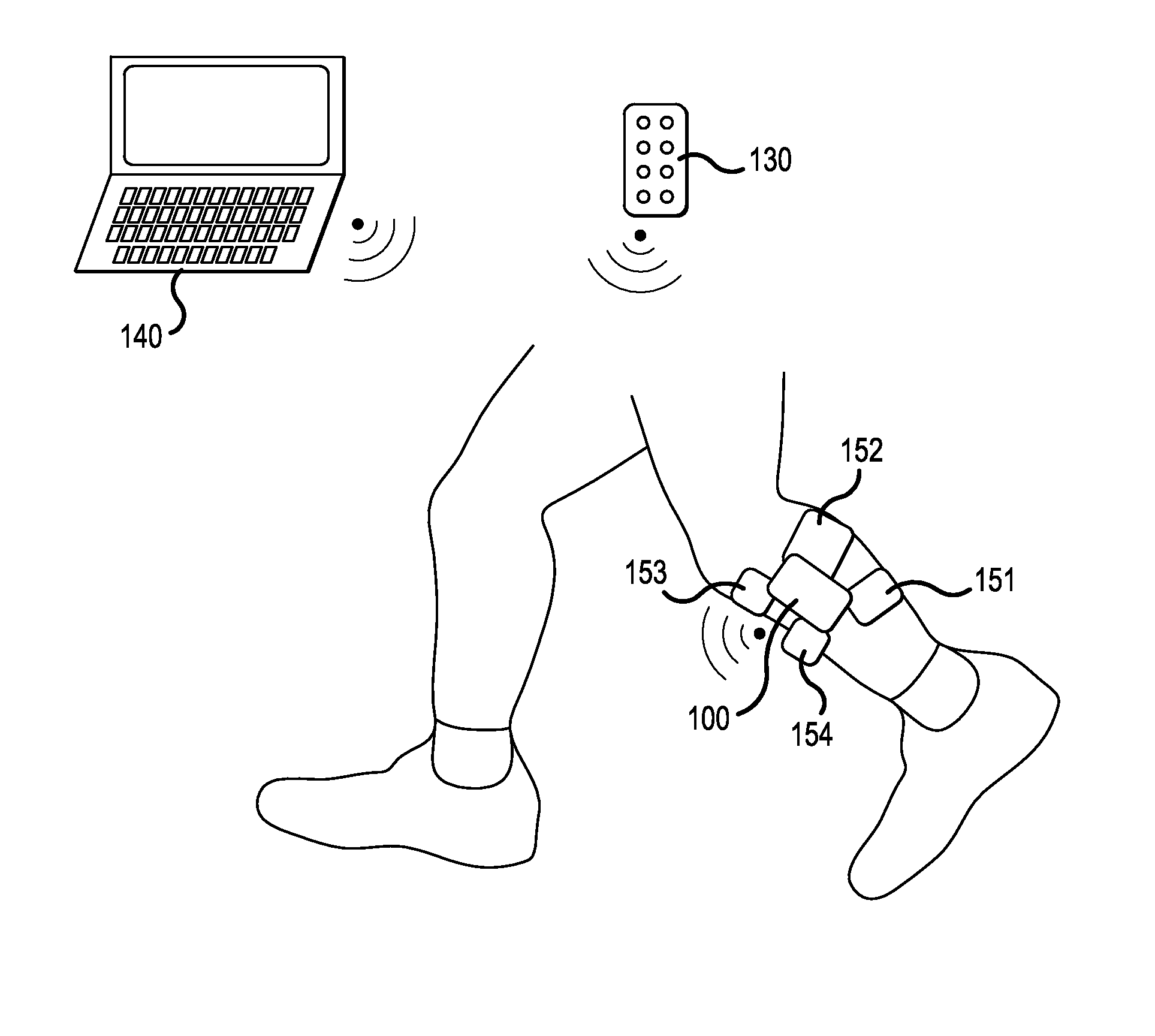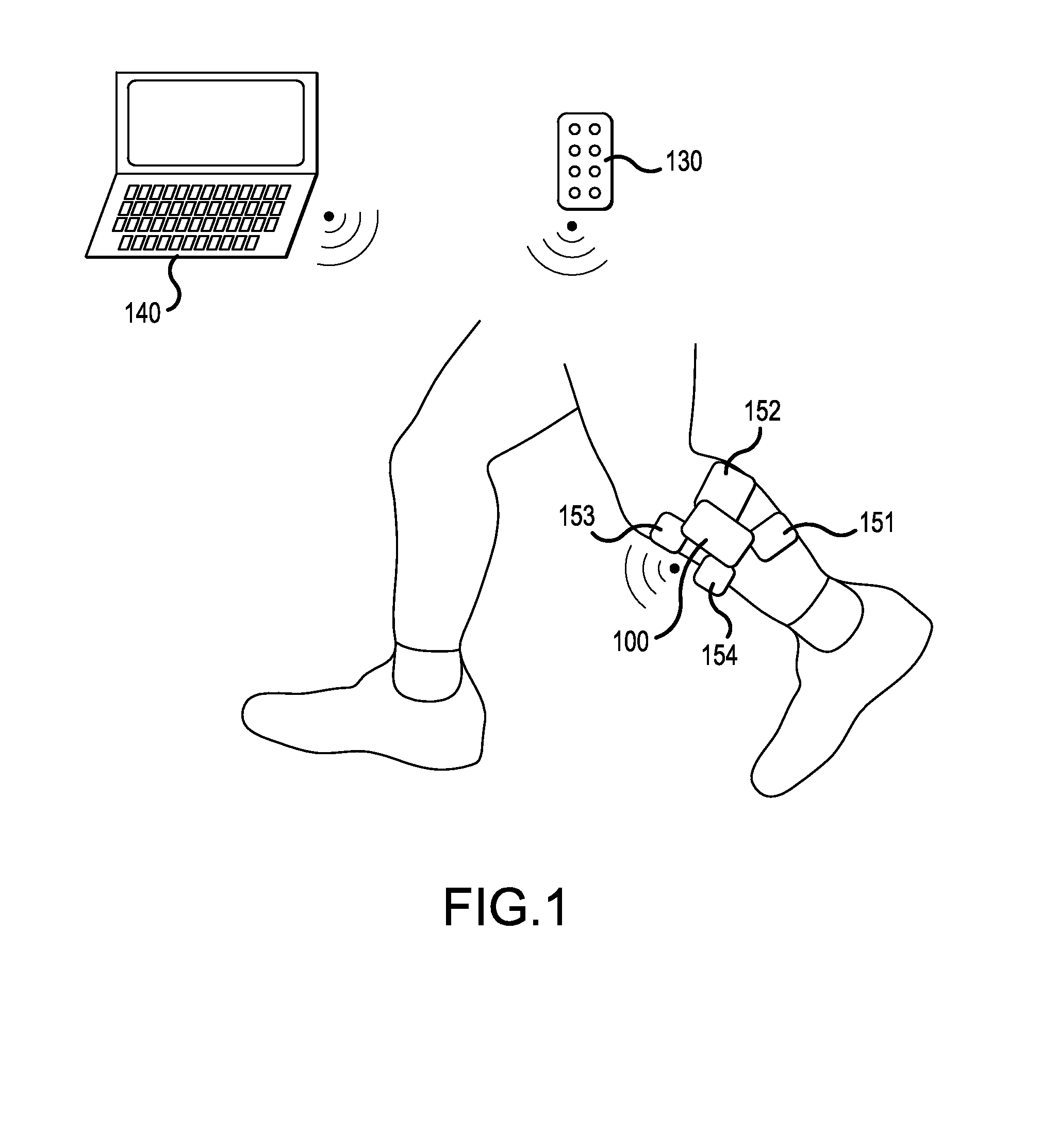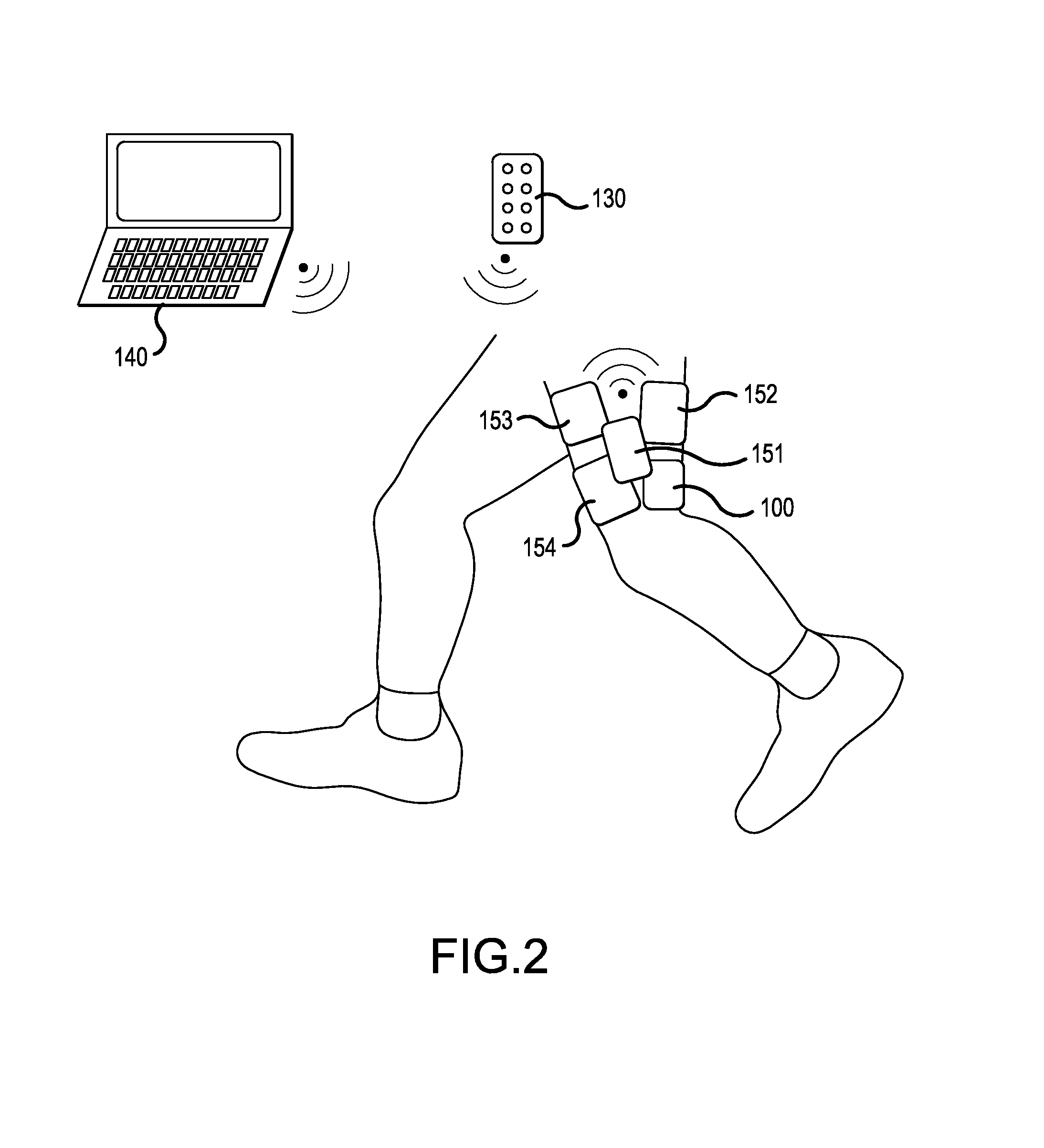Functional electrical stimulation (FES) method and system to improve walking and other locomotion functions
a functional electrical stimulation and locomotion technology, applied in the field of functional electrical stimulation (fes) method and system to improve walking and other locomotion functions, can solve the problems of limited ability to walk significantly impair the ability of individuals to maneuver in their homes, and cannot control or complete their muscles
- Summary
- Abstract
- Description
- Claims
- Application Information
AI Technical Summary
Benefits of technology
Problems solved by technology
Method used
Image
Examples
Embodiment Construction
[0031]The system of the present invention provides an easy to use wearable FES system based on an electronic infrastructure. Because of the uncomplicated design of the system's modules, the user will be able to quickly and properly apply and remove the system as desired. This will enable individuals with disabilities to selectively wear the system for several hours each day, which will facilitate better walking and other locomotor functions and contribute to re-training of the motor patterns of muscles associated with muscle movement, including walking.
[0032]FIG. 1 shows one application of the present invention and depicts the system applied to the lower leg of the user. Stimulation to the leg is used to control motion of the ankle joint and foot. The stimulator module 100 is secured to the lower leg and electrodes 151-154 are applied to the exterior of the patient so as to be in contact with the user's skin. The stimulator module provides electrical signals to the electrodes in a s...
PUM
 Login to View More
Login to View More Abstract
Description
Claims
Application Information
 Login to View More
Login to View More - R&D
- Intellectual Property
- Life Sciences
- Materials
- Tech Scout
- Unparalleled Data Quality
- Higher Quality Content
- 60% Fewer Hallucinations
Browse by: Latest US Patents, China's latest patents, Technical Efficacy Thesaurus, Application Domain, Technology Topic, Popular Technical Reports.
© 2025 PatSnap. All rights reserved.Legal|Privacy policy|Modern Slavery Act Transparency Statement|Sitemap|About US| Contact US: help@patsnap.com



